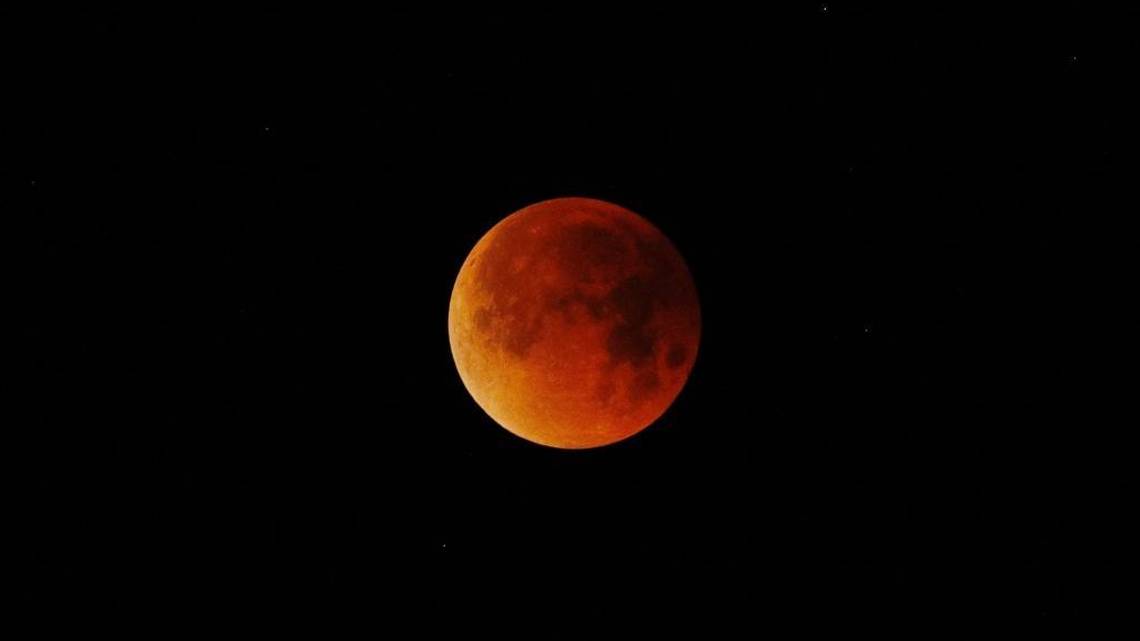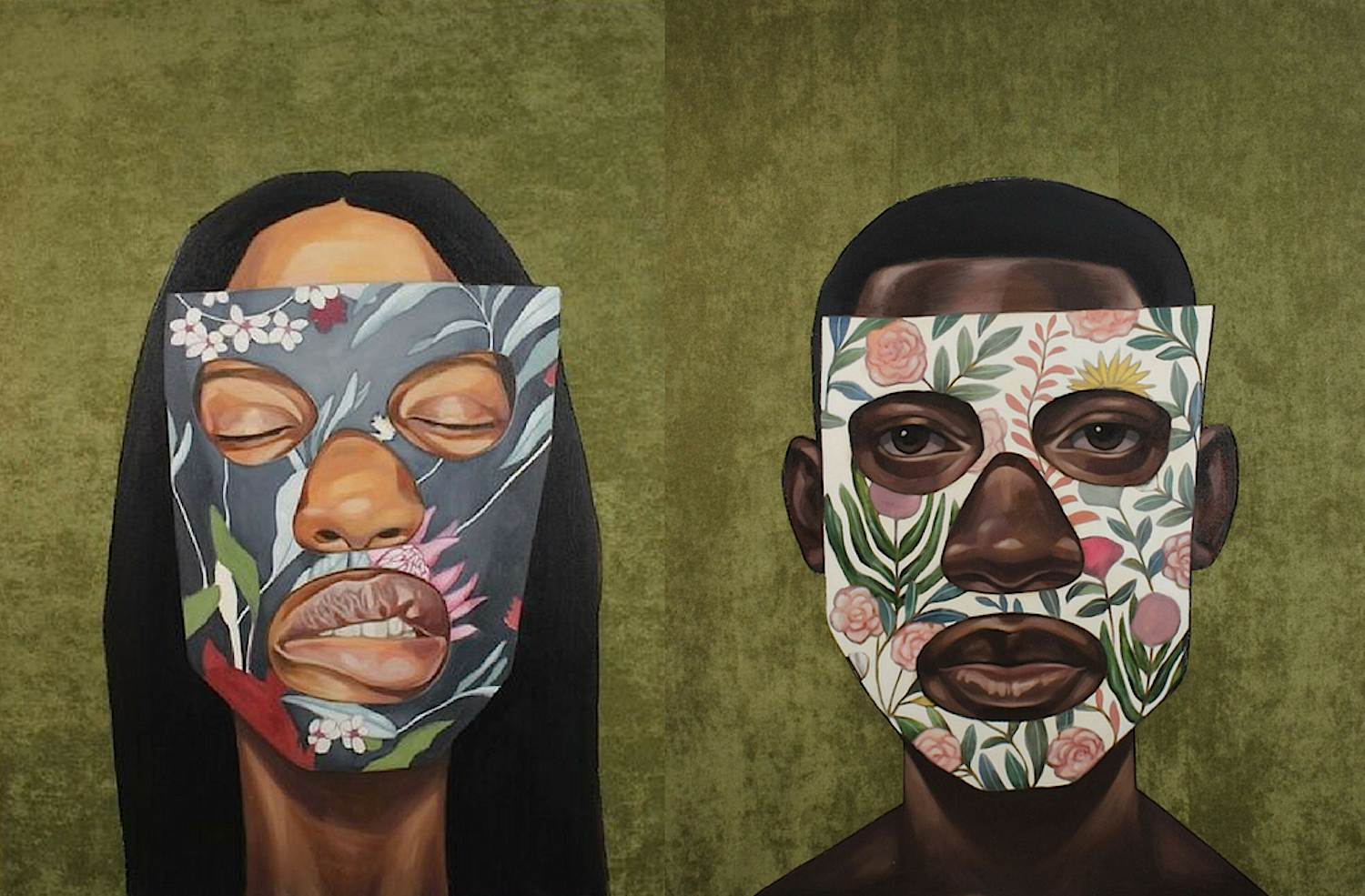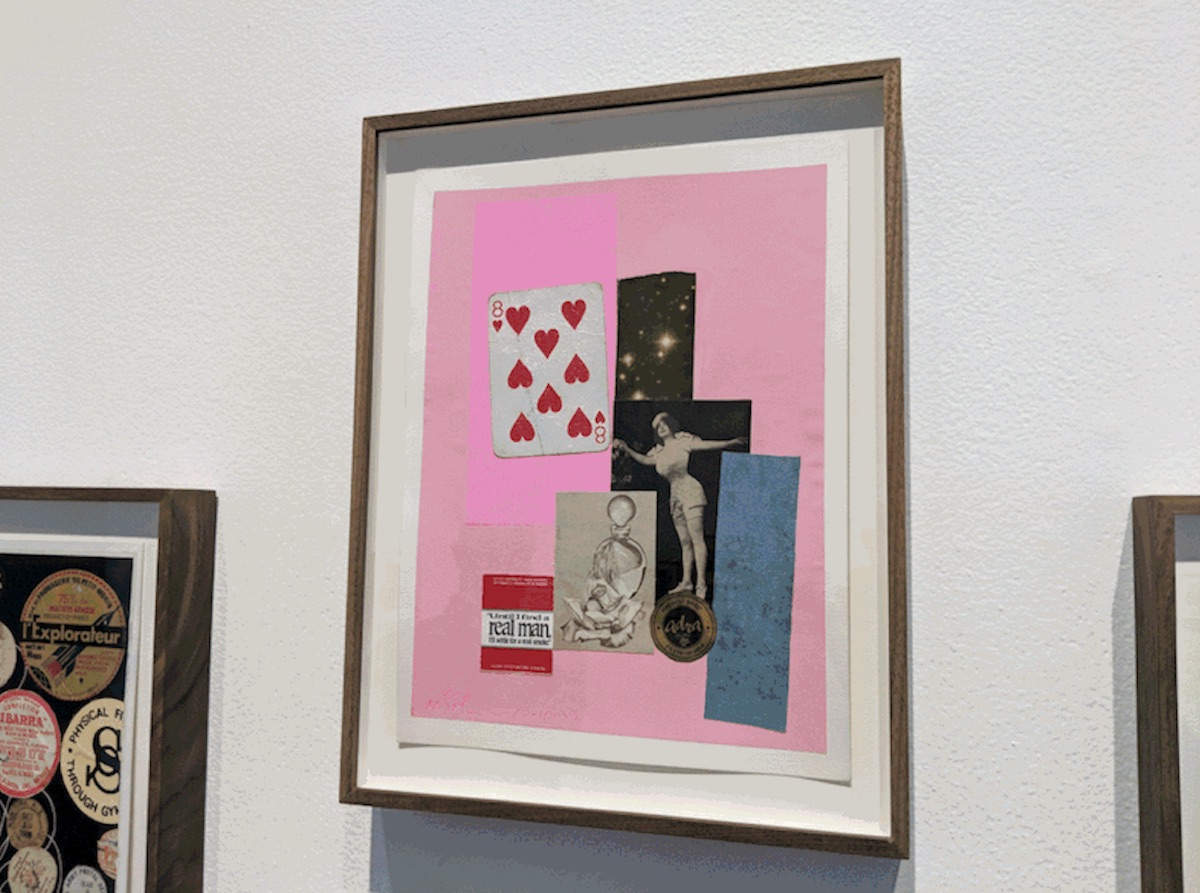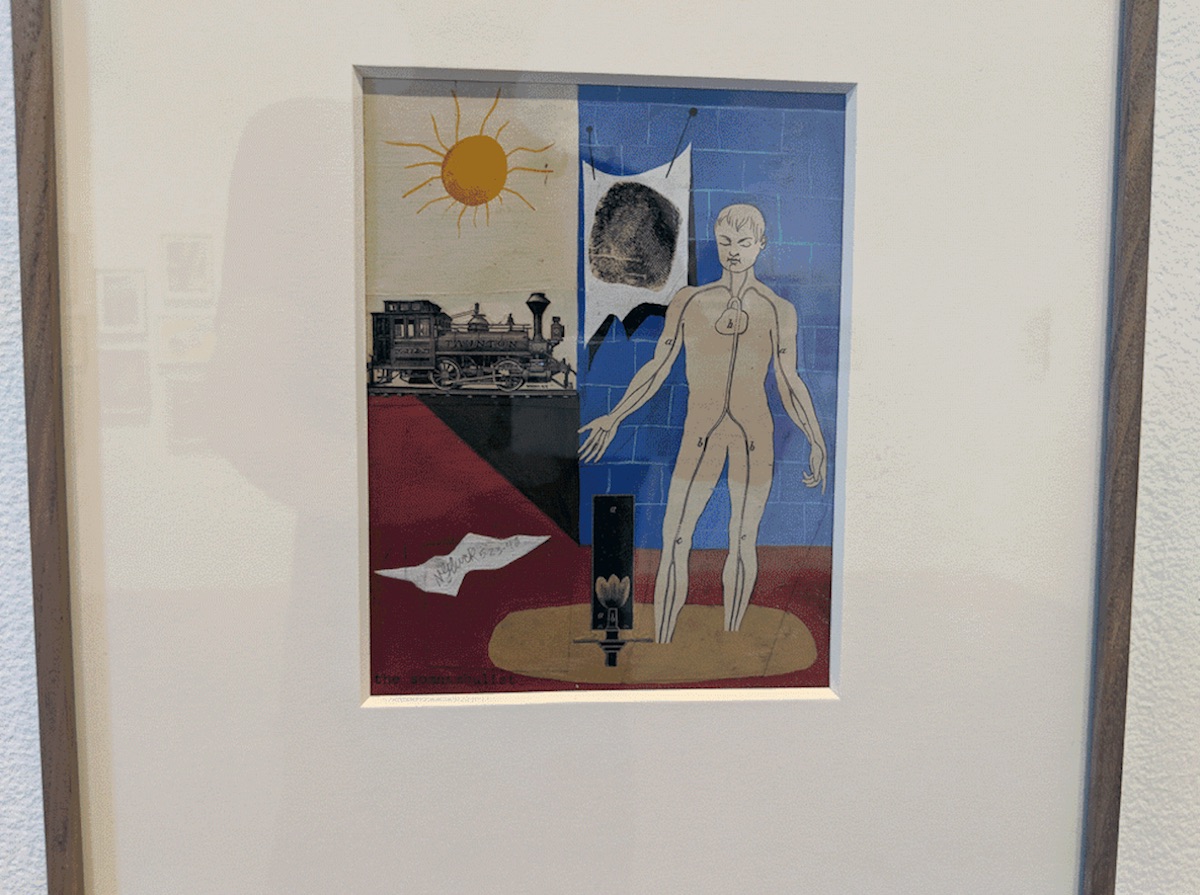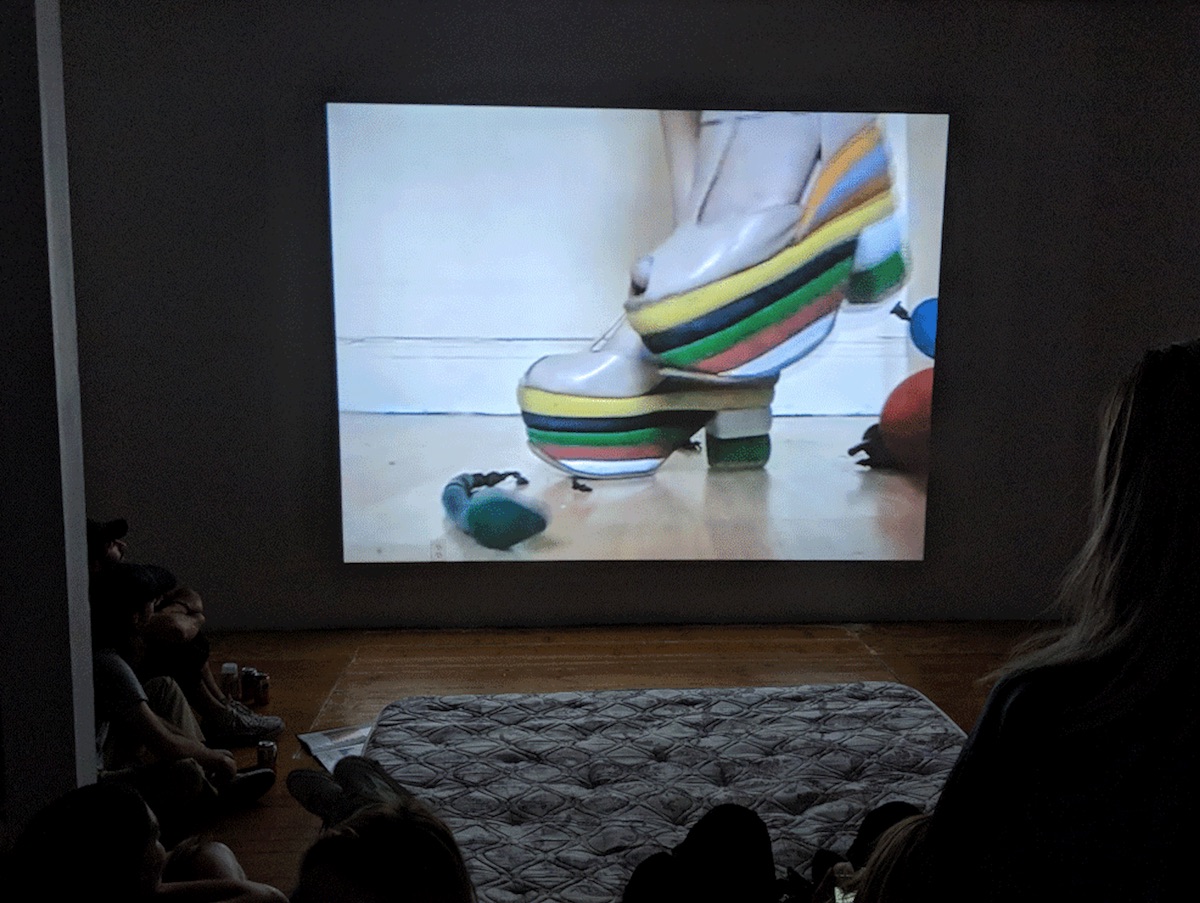A Proliferation of Art Galleries in Los Angeles by Michael Anthony Farley
I’m not sure at what point exactly this happened, but sometime over the past decade L.A. quietly sort-of-eclipsed most other American cities as one of the art world’s centers of gravity. New galleries pop up and close all the time, chasing/being chased by gentrification or opportunities. Museums open or expand or relocate at a dizzying rate. A sizable percentage of the arts professionals I know in this country have moved here for jobs, sometimes lost those jobs, and then gotten better jobs. The art scene spreads rapidly and unpredictably across this great big sprawl like a wildfire hops from one hillside subdivision to another when the Santa Ana winds are blowing.
I’m also one of those people who unabashedly loves to kvetch about what a pain in the ass L.A. is. Getting from one “must-see” thing to the next can mean hours of one’s day lost in traffic jams, $20+ Uber charges, and crossing impossibly wide, shadeless avenues in 100+ degree heat. The upside to this, however, is that gallerists really make it worth your while to actually get to the gallery. There are plenty of museum-quality shows, double or triple-stacked exhibitions in the same spaces, and densely-hung exhibitions that are easy to peruse for more time than you spent on the freeway getting to them.
So this trip, I decided to maximise my limited amount of time with a few strategies. No waiting in endless lines for blockbuster museum shows (they usually tour anyway). No hopping from last-minute events on one side of the city to the other (whoever invited you will probably already be in bed by the time you get there). And absolutely no trying to “see it all” (stick with one neighborhood for a few hours at a time or you’ll go insane).
If you only have a couple of days in L.A., I can’t recommend staying in or around Downtown enough. Going to or from Downtown is shockingly easy and cheap with L.A.’s underrated public transit (getting from one “spoke” to another on the disjointed spiderweb of light rail, metro, and bus lines is what sucks). There are plenty of art neighborhoods in this huge city, but if you have to prioritize, I recommend Culver City and the Arts District by Little Tokyo/Downtown. Both are accessible without a car and have a high enough density of offerings that you can feasibly gallery hop on foot for hours and not get bored.
Day 1: Culver City
 “Bench” by Danny First, in front of Kopeikin Gallery
“Bench” by Danny First, in front of Kopeikin Gallery
Case and point: take the Expo Line from Downtown to Culver City. I always feel vindicated when I take the new-ish train because I usually beat everyone else who opts to sit in traffic on the infamous 10 freeway. The Culver City Arts District’s former industrial buildings have long been a nexus of L.A.’s art scene (mostly radiating from the intersection of Washington and La Cienega Boulevards) and it’s inspiring to see how many mid-range galleries have managed to thrive far longer than the lifespan one would expect in most other cities.
 John Zinsser, “On Liberty,” and “File Study for a Light Blue Painting (On Liberty)” 2017
John Zinsser, “On Liberty,” and “File Study for a Light Blue Painting (On Liberty)” 2017
Von Lintel Gallery, for example, is celebrating their 25th anniversary with a salon-style show (on view until August 11th). That’s damn impressive considering pretty much everything except the blue-chip-big-guys has been shuttering in New York. The group show, TALK TO ME, is a bit uneven, but not without definite highlights. I probably wouldn’t have given much thought to John Zinsser’s large abstract work “On Liberty” had it not been for the small study on a filing folder that demonstrated the amount of thought and planning that went in to it.
 Dennis Koch: Beyond the Funny Farm! Crypto-K, Cutouts, Cut-ups, Copies, Mirrors, Membranes, and Temporal Algorithms
Dennis Koch: Beyond the Funny Farm! Crypto-K, Cutouts, Cut-ups, Copies, Mirrors, Membranes, and Temporal Algorithms
Next door, Luis De Jesus Los Angeles has two fantastic collage-centric solo shows on view until July 28th. Dennis Koch: Beyond the Funny Farm! Crypto-K, Cutouts, Cut-ups, Copies, Mirrors, Membranes, and Temporal Algorithms comprises sculptures and works on paper inspired by dizzying literary theory alongside modified LIFE magazines. The artist has incised into the publications, creating compositions that play off of the cover story and the images from advertisements within. My personal favorite is “Sex Kitten” Ann Margret, hair wild, surrounded by a chorus of televisions.
 SOMETHING ELSE: The Collages of Nathan Gluck, installation view of later works.
SOMETHING ELSE: The Collages of Nathan Gluck, installation view of later works.
It’s the show in the front room, however, that I found myself thinking about days after seeing. SOMETHING ELSE: The Collages of Nathan Gluck is a survey of the late artist’s small works on paper that spans from the 1930s to the 2000s. Gallerist Luis De Jesus was a close friend of Gluck, who himself worked as a window dresser and assistant to Andy Warhol (among many other adventures). De Jesus lovingly organized this tribute with a personal eye to the artist’s singular wit and personality, sorting through a treasure trove of material in Gluck’s estate.
Selection of collages, in no particular order, from the 1930s to 2013.
Collages from the later years of the artist’s life might include contemporary newspaper clippings alongside ticket stubs from events he attended decades ago. They’re often aloof with an absurdist sensibility, but sometimes betray autobiographical details and restrained hints at queer desire. I love seeing the progression from Gluck’s earliest, surrealist-inspired collages to more theatrical allusions to imaginary space, to totally graphic, liberated compositions in his later works.
 Nathan Gluck, “WTC”, 9/12, 2001
Nathan Gluck, “WTC”, 9/12, 2001
There’s an almost eerie prescience to the work “Towards a new horizon,” an ambiguous scene in which we see the back of a woman in Victorian dress staring out at a hot air balloon crossing a gridded, barren desert. It’s perhaps a reflection on the uncertainty of modernity—dated December 8th, 1941, the day after the attack on Pearl Harbor that ensnared the United States in World War II.
I might not have noticed the date had it not been for another work in the show, dated September 12th, 2001. It’s a stylized memorial to the previous day’s terrorist attacks, which launched another decade+ of conflict. Included in the lower left-hand corner is a World Trade Center visitor’s pass, filled out for Luis De Jesus just months before. Again, traces of the personal show up in Gluck’s assemblages, even when marking historical moments. I can’t think of any other artist who made work in response to both Pearl Harbor and 9/11 in real time.
 Ed Ruscha: Prints & Ephemera installation view.
Ed Ruscha: Prints & Ephemera installation view.
Down the block, Honor Fraser (one of my favorite L.A. galleries) has a similarly encyclopedic survey show—Ed Ruscha: Prints & Ephemera. It’s a somewhat overwhelming collection of the artist’s graphic design work, films, and experiments with printmaking. Diehard Ruscha fans could probably get lost in this show (which features work from the late 1960s to 2017) for hours. I must confess, at this point I was starting to get a little burnt-out and didn’t spend nearly as much time here as I wish I had. But it’s a definite must-see.
 Installation view with Ruscha’s iconic “Standard Station” prints from 1966
Installation view with Ruscha’s iconic “Standard Station” prints from 1966
 Maria E. Piñeres
Maria E. Piñeres
Thankfully, I got to catch the tail end of the show next door at Walter Maciel Gallery before it came down (it’s sadly no longer on view) and it was a total battery-recharger. Maria E. Piñeres: Primordial Chaos featured trippy, camouflage-like embroideries in acidic hues. You can just make out muscular human bodies intertwined. I first thought this was a textile print made out of stills from pixelated gay porn. It turns out they’re inspired by the ladies (and costumes) of GLOW, the television show about female wrestlers in the 1980s.
Piñeres was apparently inspired by the complimentary activities of binge-watching Netflix and the repetitive process of needle-point, which she picked up while visiting family in her native Colombia. I like the distinct visions of “women’s work” presented by both traditional textile craft and professional wrestling, here gloriously married in technicolor.
Day 2: Arts District by Little Tokyo/Downtown

No art-centric visit to L.A. is complete without a pilgrimage to Hauser & Wirth’s local outpost—which occupies an entire block of the Arts District in an old flour mill. Perhaps no other location in L.A. exemplifies the desire to make every destination a “destination” as much as their complex. There’s a great art book store, several exhibition spaces, and even a restaurant with its own farm. I can’t think of another blue-chip gallery with a permanent chicken coop.

There are several shows up right now, but I was mainly interested in Jack Whitten: Self Portrait With Satellites (on view until September 23rd). The exhibition is a survey of the recently-deceased painter’s oeuvre, planned in conjunction with the Baltimore Museum of Art’s current exhibition Odyssey: Jack Whitten Sculpture, 1963 – 2017.
Here, we get works that speak to Whitten’s mastery of paint. Over the several decades this survey covers, Whitten’s surfaces alternate between graphic and painterly, impasto and washy. So much of contemporary painting’s mark-making vocabulary might be spelled out on a single canvas. It’s one of those exhibitions that must be viewed in the flesh to be fully appreciated.
 Jack Whitten: “Satori”, 1969 (L) and “Self Portrait”, 1979
Jack Whitten: “Satori”, 1969 (L) and “Self Portrait”, 1979
 Jack Whitten “Self Portrait With Satellites,” 1984
Jack Whitten “Self Portrait With Satellites,” 1984
 Jack Whitten “Confirmation I Happy Birthday Mary,” 1979
Jack Whitten “Confirmation I Happy Birthday Mary,” 1979
 Larry Bell. Complete Cubes installation view
Larry Bell. Complete Cubes installation view
In one of the complex’s other massive galleries, Larry Bell. Complete Cubes (on view until September 23rd) offers a chance to view every translucent box created by the artist from the early 1960s to the 2000s. They’re organized by scale, beginning with a tiny untitled work from 1964 and terminating in a room-sized, contemplative installation of three new colored glass cubes, each frosted and at a scale that could allude to unseen domestic spaces.
I wasn’t familiar with Bell’s work prior to seeing this show, and I’m glad I did. As individual objects, not all of the glass sculptures are particularly interesting. As a collection, they speak to a decades-long experiment with a single material and form that can yield surprisingly diverse results.
 Kellen Chasuk, “Frantic efforts at immortality” 2018 (L) and Cleonette Harris, “Celeste XXX at Psychic Fortune Teller” (R) at LAST Projects
Kellen Chasuk, “Frantic efforts at immortality” 2018 (L) and Cleonette Harris, “Celeste XXX at Psychic Fortune Teller” (R) at LAST Projects
One of the few events I had planned ahead to attend was the closing of the What if Utopia? Queer Biennial at LAST Projects, a storefront space with an artist-run vibe in Lincoln Heights, about 30 minutes northeast of the Arts District on the Gold Line. Weirdly, the people I invited and I were basically the only people at the closing. This was strange, because the jam-packed show was actually really, really good. This was also fortunate, because we actually got to see the tightly-hung show in the small space without big crowds.
 Dorian Wood, “Trophy” 2018
Dorian Wood, “Trophy” 2018
The curatorial prompt to imagine a queer utopia sparked a fabulously diverse range of responses—from more Hockney-esque traditional representations of queer desire to experiments with materiality and a few pieces that functioned on both levels.
I’m thinking specifically of Dorian Wood’s “Trophy,” comprising human hair hung from stretcher bars, gently swaying in the breeze of a fan and Jeff Zilla’s untitled phallic sculpture, rendered from Mod Podge, fur, and craft acrylics. It evokes a hybrid vegetable somewhere between a brussel sprout and broccoli, perhaps a take on the subtle body horror implied by the association of the “eggplant emoji” with big penises?
 Jeff Zilla, untitled, 2017
Jeff Zilla, untitled, 2017
 Patrick Donovan, “June 21” 2017
Patrick Donovan, “June 21” 2017
 Ken Gun Minn, “he-man study_02”
Ken Gun Minn, “he-man study_02”
 Alex Andrew Sanchez, “Untitled” (L) and “You blew my brains out again but you helped again because you genuinely loved me” (R)
Alex Andrew Sanchez, “Untitled” (L) and “You blew my brains out again but you helped again because you genuinely loved me” (R)
 ektor garcia, “shoe from cochi installation,” 2017
ektor garcia, “shoe from cochi installation,” 2017
 “NOT A BODY” by Gianni Arone, who has a solo show at LAST Projects on view until August 11th
“NOT A BODY” by Gianni Arone, who has a solo show at LAST Projects on view until August 11th
 Trevor Yeung “Initial Ritual of Mr. Butterflies,” 2015
Trevor Yeung “Initial Ritual of Mr. Butterflies,” 2015
As the biennial closing wound-down, we got an invitation to the late-night opening of three new projects (on view until July 29th) at Club Pro Los Angeles, one of my favorite spaces in Downtown. One, Palladian Dream, from the Italian art/design collective Amore Agency, imagined one small gallery as an intimate cocktail lounge from an ambiguous decade of the 20th century, complete with yummy drinks.
Another show, Feel Nothing. Be Bored. has transformed one of the larger galleries into a domestic-feeling screening space, complete with a mattress and sofa that looks straight-outta-grandma’s house. The cycle features video work by Animal Charm, Christina Acevedo, Rich Bott, Jim Fetterly, Abby Lloyd, Geneva Jacuzzi, Chloe Pang, PSA, Alex Sanchez and Molly Shea. Curator Dylan DeRose’s group show Beckoning the Mutation is a tight (if not a bit sparse) survey of Hong-Kong-based artists considering change and states of flux, from the societal to organic. It features work by Andrew Luk, Ko Sin Tung, Mak Ying Tung 2, and Trevor Yeung,
Yeung’s kinetic sculpture “Initial Ritual of Mr. Butterflies” comprises simply two palms on spinning motors and theatrical lighting in the “culturally sublimated” Pantone “Colors of the Year, 2016”. I love this piece because it’s both pretty and so very much of its time. Critic Whitney Kimball once said “plants are no longer a trend; they are a medium.” in one of our many conversations about whether or not it’s okay to love really trendy-looking art as much as we sometimes do. I am not sure if this is “good art” or not, I just wish I had this in my house.
Abby Lloyd, Balloon Stomp, 2018
 Molly Shea “Champagne” 2018
Molly Shea “Champagne” 2018
The video works in Feel Nothing. Be Bored. are equally hypnotic and absurd. Abby Lloyd’s “Balloon Stomp” depicts platform shoes crushing balloon dogs, bringing to mind some masochistic Jeff Koons collector’s secret kink. And then there’s Molly Shea’s “Champagne,” which appears to show a woman filling up a champagne fountain with urine.
Is this a Donald Trump reference? I’m not sure, but cheers L.A., it’s been real.
Top Image: This tattoo (artist unknown) of Judge Judy on a stranger’s leg outside a Hollywood dive bar is legitimately the best portrait I’ve seen all year.
